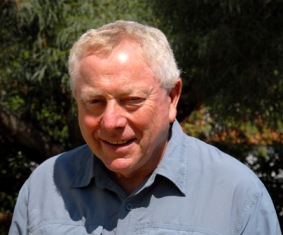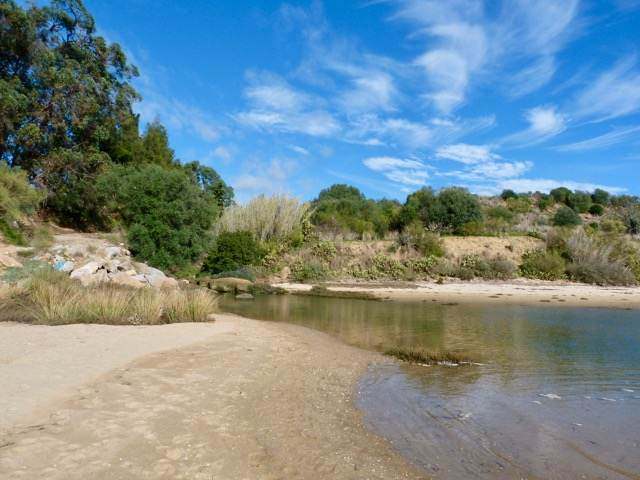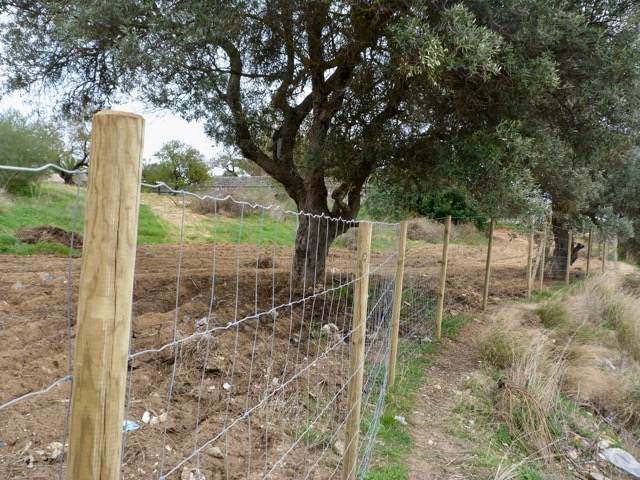Conservation
Articles Out with
Papa Figos Algarve
Books
Out with Papa-figos

Clive Viney - co-author of Algarve Wildlife - the natural year
Papa-figos (which literally translates as fig eater) is the Portuguese name for the Golden Oriole, one of the iconic visiting birds of the Algarve. Clive Viney is the co-author of Algarve Wildlife - the natural year, and now, under the guise of Papa-Figos, chronicles his finds, thoughts and feelings while walking in the Algarve countryside throughout the natural year. Look out for his regular updates, illustrated by his fellow co-author and photographer, Ray Tipper, who has kindly provided some of the photographs that illustrate these articles by clicking through from the links below.
A walk at Cabanas on the Ria Formosa
Cabanas de Tavira (literally huts of Tavira) is simply called Cabanas by almost everyone. This active fishing village is situated on the Parque Natural da Ria Formosa about 5km east of Tavira from where it is easily accessible by taxi or bus. All year it provides a lively waterfront for the extensive but low-rise holiday developments that now stretch back to the N125. One or two of the restaurants are excellent and there is a definite café culture. In high summer the bars are popular. Recently Cabanas has undergone a makeover with a delightful and popular kilometre long seafront boardwalk overlooking the natural lagoon. Sensibly, the narrow roads and parking areas are not available to motor homes – a site with full facilities is available at nearby Conceição.

Ria Formosa east of Cabanas
At the eastern end of Cabanas is the commanding Forte São João da Barra. Although privately owned it was possible until recently to follow a path around the fort, which made an attractive extension to the boardwalk. Tourist literature and street signs still point visitors to the fort. Newly erected fencing now bars the paths and bold ‘Passagem Probida’ and ‘Propriedade Particular’ signs have been erected. I fear that a developer has acquired the land.
Beyond the fort, five kilometres of lagoon stretch towards the historic cliff-top village of Cacela Velha. It is a scenically superb area that is a haven for an exploratory naturalist. Sandstone cliffs provide the backdrop. At the foot of the cliffs a few mature trees (mostly carobs) give way to scrubland where White Broom Retama monosperma dominates and, surprisingly, Prickly Pear Opuntia maxima is well established. The scrub makes way for typical saline flora, such as the glasswort Arthrocnemum macrostachyum. At low tide a good variety of shorebirds, gulls and terns can be viewed in the lagoon. Beyond the enclosing barrier island, Ilha de Cabanas, the open sea is visible and sometimes Northern Gannets can be seen plunge diving. At any time the undisturbed scrub is full of birds and during migrations scarce and rare species occur. Birds are forever moving along the cliffs and rabbits scuttle through the vegetation clinging to the cliff face.
Despite the vegetation, channels of sand make passage through the scrub easy. At the highest spring tides paddling may be needed. The water in the lagoon is surprisingly clear but close to Cabanas waterborne litter left by the tide needs to be ignored. It would take very little effort to make the shoreline pristine.

Praia do Lacém
Halfway to Cacela Velha is the grandly named Praia do Lacém (called this in the Turismo de Portugal’s Algarve Beach Guide) with no facilities whatsoever. Here a stream runs down to the beach and the dense riverside vegetation adds habitat diversity. Land access is only possible by a narrow, unsurfaced lane, where parking is next to impossible. This is a very pretty spot and outside of high summer seldom visited.
A few years ago it was possible to follow paths along the cliff tops all the way to Fábrica, an attractive seaside hamlet with a good restaurant, a short way before Cacela Velha. After lunch a return could be made along the shore, thereby making a superb day’s field trip. However, two or three property owners, legally or otherwise erected fences to the edge of the cliffs. At first it was possible to make diversions but then came the controversial approval of the Quinta da Ria Golf Course, which when built provided an insurmountable obstruction to ramblers.
The United Kingdom is very proud of its coastal footpaths. Why not here in the Algarve? After all, out-of-season, ecotourism is a current promotion of the Turismo de Portugal and, for example, the trans-Algarve Via Algarviana and Ecovia Litoral Cycle Route were enthusiastically supported. A good start would be a cliff-top route from Cabanas to Cacela Velha. This would be the best way for the public to see and enjoy the most scenic and unspoiled part of the Parque Natural da Ria Formosa.

The new fence
It had been a while since I last explored the shoreline so on 9th November I set off early. After a cloudy start the sun soon came out. The fort was denied me by the new fence, so I worked my way along the shore eastwards from Cabanas – the tide was up but this was not a problem. Small flocks of Mediterranean Gulls flew westwards - these migrant gulls pass along the Algarve coast in the late autumn. Flocks of starlings on the cliff tops proved to be wintering Common Starlings, which are a lot less common than our resident Spotless Starlings. The broom scrub was bursting with birds. Wintering Song Thrushes, Common Chiffchaffs and Robins were everywhere. Small bands of finches flittered here and there. The star bird, though, was an Osprey carrying a fish. After an hour or so fossicking along the shore I reached reached Lacém.
I decided to return by using the Ecovia Litoral Cycle Route. To reach this track, a pleasant walk up the lane from Praia do Lacém is required and then a left turn at the crossroads onto the Ecovia. Cetti’s Warblers were calling from the reedbeds by the stream. This part of the Ecovia mostly passes through commercial citrus orchards and because of this it is free from yappy dogs. I noted several Monarch butterflies, which like the more numerous Painted Ladies must have been migrants. One orchard grew persimmons (kaki fruit) and the last part of the route was next to the open almond orchard behind the Forte São João da Barra. During the entire walk I identified some 40 species of birds.
With plenty of stops, the circuit took a comfortable three hours. I ate my sandwiches facing the birdy lagoon while sitting on one of the numerous seats along Cabanas’s ‘Les Planches’.
Papa-figos
Tavira
10th November 2016
Back to Papa-figos index...
Sue Parker's latest ebook is a revised and enlarged second edition of the acclaimed Wildflowers in the Algarve - an introductory guide. Full details here...
Buy it for just £3.95 on Amazon...
Sue Parker's 5-star acclaimed field guide to the Wild Orchids of the Algarve is now available as an ebook. Full details here...
Buy it for just £5.95 on Amazon...
Please Help Us: If you have found this information interesting and useful, please consider helping to keep First Nature online by making a small donation towards the web hosting and internet costs.
Any donations over and above the essential running costs will help support the conservation work of Plantlife, the Rivers Trust and charitable botanic gardens - as do author royalties and publisher proceeds from books by Pat and Sue.